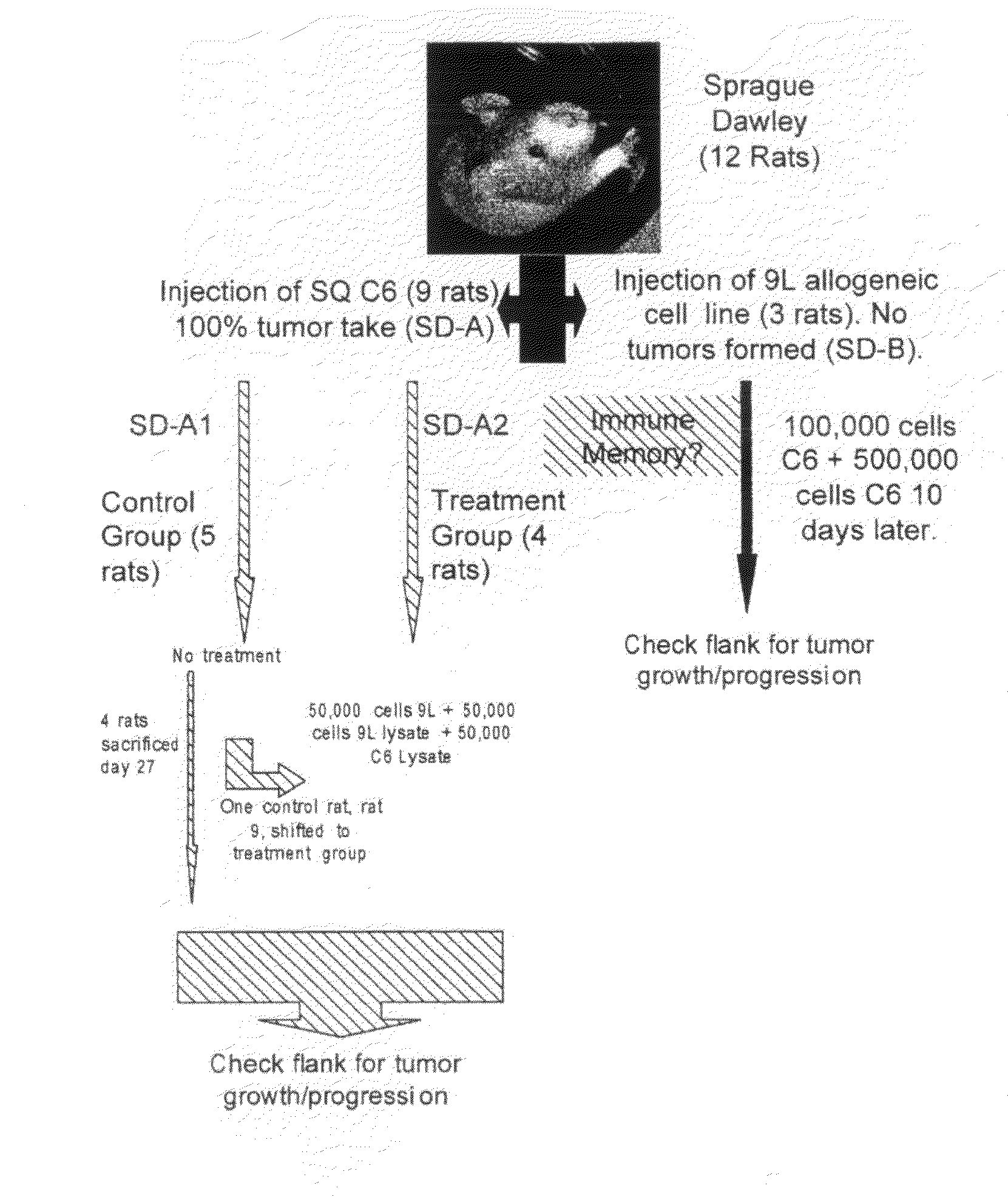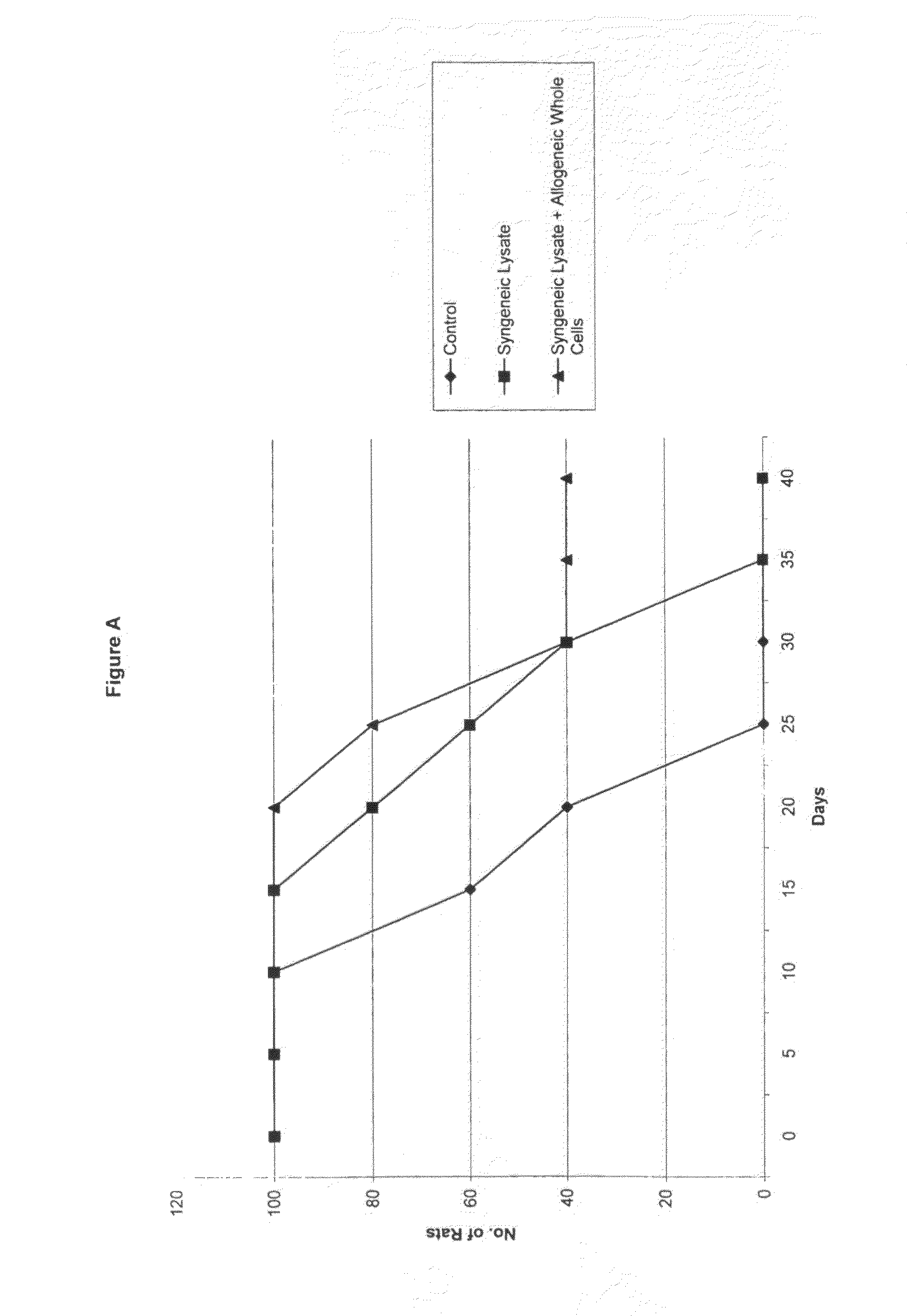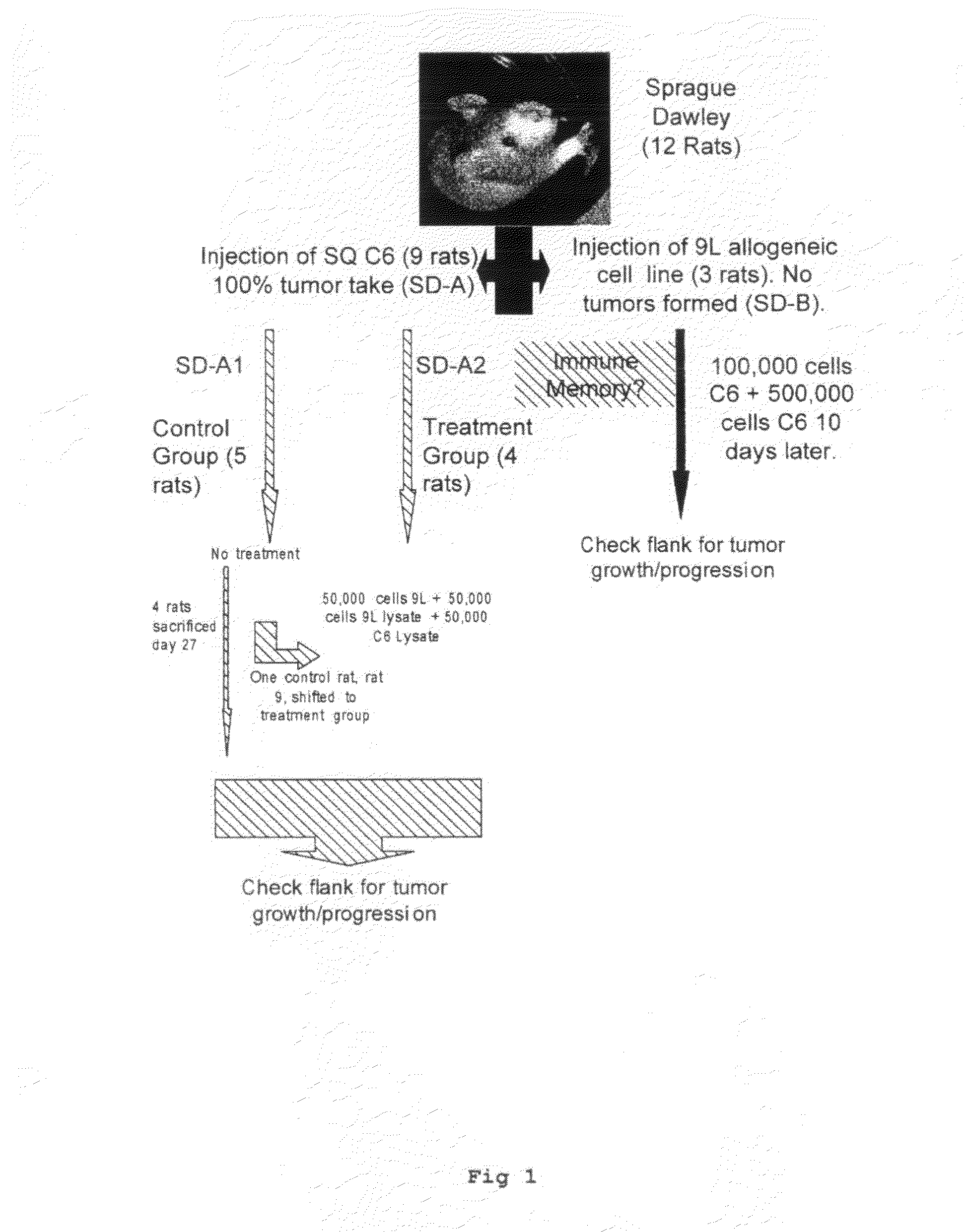Tumour Vaccine Comprising Allogenic or Xenogeneic Tumour Cells
a tumour and allogeneic technology, applied in the field of tumour treatment, can solve the problems that the effect of tumour rejection and immunity cannot be achieved solely, and achieve the effect of reducing the size of the tumour, eliminating it, and increasing the immunological awareness of the immune system
- Summary
- Abstract
- Description
- Claims
- Application Information
AI Technical Summary
Benefits of technology
Problems solved by technology
Method used
Image
Examples
example
[0056]The cell lines used in this experiment were the rat glioma cell lines (9L, C6, RG2), and the human glioma cell lines (U87, LN229). All lines were obtained from the American Type Tissue Collection (ATTC), and grown in Dulbecco's Modified Eagles Medium (DMEM) (G1BCO, Grand Island, N.Y.) supplemented with 10% heat-killed Fetal Calf Serum (FCS). 5% penicillin-streptomycin, and Hepes buffer in a humidified incubator at 37° C. in a 5% CO2 atmosphere.
Cell Lysate Preparation:
[0057]1.0×105 cells were placed in 5 ml tube in culture medium and centrifuged for 5 min at 2.5×103 rpm. The supernatant was discarded and 150 μl of sterile distilled water was added to the tube. The cell / water solution was mixed well and transferred to a 1.0 ml Eppendorf tube and centrifuged at 1.0×104 for 10 minutes. The supernatant was not discarded and this entire solution was used for cell lysate injections.
Antibodies and Immunohistochemistry:
[0058]Tumour samples taken from the Fis...
PUM
| Property | Measurement | Unit |
|---|---|---|
| thickness | aaaaa | aaaaa |
| concentration | aaaaa | aaaaa |
| concentration | aaaaa | aaaaa |
Abstract
Description
Claims
Application Information
 Login to View More
Login to View More - R&D
- Intellectual Property
- Life Sciences
- Materials
- Tech Scout
- Unparalleled Data Quality
- Higher Quality Content
- 60% Fewer Hallucinations
Browse by: Latest US Patents, China's latest patents, Technical Efficacy Thesaurus, Application Domain, Technology Topic, Popular Technical Reports.
© 2025 PatSnap. All rights reserved.Legal|Privacy policy|Modern Slavery Act Transparency Statement|Sitemap|About US| Contact US: help@patsnap.com



